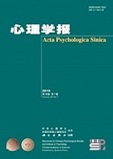|
|
The Modulation of Intentional Control on Automatic Inhibition in Cognitive Aging
LIU Pan,XIE Ning,WU Yan-Hong
2010, 42 (10):
981-987.
Cognitive aging is an unavoidable phenomenon for human beings. Various theories have been proposed to clarify the mechanism underlying cognitive aging, such as Processing Speed Theory (Salthouse, 1985, 1996), Decline in Inhibition Theory (Hasher & Zacks, 1988) and Working Memory Theory (Swanson, 1999), which attribute the age-related decline of cognitive ability to descended processing speed, reduced efficiency of inhibitory control and decreased working memory capacity, respectively. Additionally, Executive Decline Hypothesis, which was proposed recently (Li & Chen, 2006), argues that the age-related decline of executive functioning is the main reason of cognitive aging. Meanwhile, previous research with young adults as participants has demonstrated that, although location-based inhibition of return (IOR) remains unaffected in cognitive aging and is regarded as a type of automatic inhibitory ability, it can be modulated by top-down intentional cognitive control. Nevertheless, whether this modulation is affected in cognitive aging remains an open question. Therefore, the present research aims to investigate this question by combining the proportion control method and the location-based IOR paradigm with both young and old adults as participants.
A detection task was adopted for this purpose. In this task, a target (a white spot) appeared in either the left or the right white square on a gray background on a computer screen and participants were asked to detect the stimulus as quickly as possible by pressing the space bar. Each time before the target was shown, one of the two squares flashed up, which was defined as a cue indicating the location of the coming target. The whole experiment was divided into two sessions, in which the validity proportion of the location cue was 50% and 80% respectively. Participants were informed of the validity proportion before each session. Sixteen old adults (mean age = 64.4 years old) and sixteen college students (mean age = 22.4 years old) were recruited for the experiment.
Analysis of variance on reaction time showed that when the validity proportion was set at 50%, both young and older adults showed typical location-based IOR effects and no significant difference in the effect size was found between the two groups (older adults: IOR = 20.7ms vs. young adults: IOR = 16.2ms); however, when the proportion of valid cue was increased to 80%, IOR effects declined by different extents in the two groups. A reversed IOR effect (IOR = -31.8ms) was found in young adults while the IOR effect disappeared in old adults (IOR = 3.1ms, p > 0.1).
When the proportion of valid cue was set to a baseline level (50%), participants were unable to predict the target location effectively. Thus, the identical effect size of IOR in the two groups implies that the location-based IOR as an automatic inhibition remains unaffected in cognitive aging. However, when the proportion of valid cue was increased to 80%, participants were more likely to attend to the cued location, suggesting a top-down cognitive control on attention. Thus, the declined IOR effect demonstrates that the automatic inhibition of return is modulated by intentional control. This finding is also consistent with that of previous research (e.g. Zhang & Chen, 2002b, 2004). More importantly, the amount of modulation in the old adults is significantly smaller than that of the young adults, indicating that the modulation of intentional control on automatic inhibition diminished during cognitive aging, which supports the Executive Decline Hypothesis (Raz, 2000; West, 1996).
Related Articles |
Metrics
|




